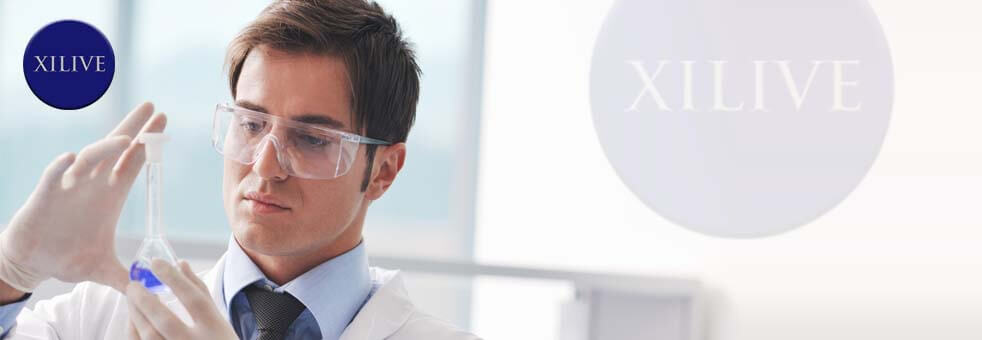Clinical Trials

Our delivery technology maintains GRAS”, or (Generally Recognized As Safe) ingredients. Used on a daily basis, it can help improve sexual desire, intimacy and pleasure.
Easton Pharmaceuticals, Inc. scientists discovered that certain molecules called polymers possessed strong electrical charges which, when combined with other polymers of a specific electrical charge, are able to effectively help transport agents through the outer layers of the skin.
In addition, these molecules are able to attach or surround other molecules such as therapeutic molecules and carry them within a matrix through the outer layers of the skin Easton Pharmaceuticals scientists recognized that these discoveries would be of great significance in regard to the delivery of therapeutic agents.
Easton Pharmaceuticals, Inc. research indicates that its proprietary technology is capable of combining in a matrix, in a novel manner, certain ingredients that are well established and generally regarded by the public, the regulatory authorities and pharmaceutical industry as safe “GRAS”, or (Generally Recognized As Safe).
When combined with other therapeutic ingredients, we believe that the VDM technology allows the delivery of greater amounts of therapeutic ingredients to the target area than may otherwise be possible.
All cosmetic and drug products are regulated in the United States by the FDA, and in other jurisdictions by various other regulatory authorities.
We believe the products we are developing will be classified as cosmetics or Class I medical devices. Products classified as cosmetics may be marketed and sold online in the US and Canadian pharmacy service, such as Advance, without FDA approval. Drugs are not cosmetics and those, as well as OTC drugs, must be marketed following FDA regulations and/or approvals in the United States.
Before human testing can begin with respect to a new drug in the United States, preclinical studies are conducted in laboratory animals to evaluate the potential efficacy and the safety of a product. Human clinical studies generally involve a three-phase process.
The initial clinical evaluation, Phase I, consists of administering the product and testing for safe and tolerable dosage levels. Phase II trials continue the evaluation of safety and determine the appropriate dosage for the product, identify possible side effects and risks in a larger group of subjects, and provide preliminary indications of efficacy. Phase III trials consist of testing for actual clinical efficacy within an expanded group of patients at geographically dispersed test sites.
We believe that our VDM technology, when used with prescription drugs, or with currently approved OTC drugs will be regulated as a new drug and will require approval by the FDA. Conversely, we believe that the VDM delivery technology, when used as a cosmetic can be marketed without prior approval.
Initial feedback on patients treated prior to Easton purchasing its minority interest in Xilive has been extremely encouraging although they were not performed under the supervision of oncologists in a controlled study.
Easton will formalize a clinical plan aimed at “fast-track” approval in most controlled jurisdictions. Since cancer is a disease which can cause death very quickly, Easton, in consultation with its advisors and consultants believes the clinical path towards a formal POC (Proof of Concept) study could be very brief, and based on formal data from a well-run POC study, could lead to initiation of approval stage (Phase II/III) clinical studies in 2015.
At this point if the data shows similar results to the first few patients who have taken Xilive, Easton believes it could license the drug to a major Pharmaceutical company in the cancer drug arena. The drug can be currently utilized only under the compassionate use exemption within the United States, which calls for a patient or anyone wishing to utilize the drug to file necessary paperwork with the food and drug administration to get approval for its use.
We believe Viorra’s stretch mark and scar product line currently in development would be considered a Class I device in the US, and may be less regulated in other jurisdictions. Class I devices are subject to “general controls”. This is the lowest level of FDA control of medical devices that focuses on basic factors such as quality regulation. In foreign countries our products may be regulated by regulatory authorities similar to the FDA, and each such foreign regulatory authority may impose its own regulations on us which can be different or more difficult and costly to comply with than FDA regulations.
Easton Pharmaceuticals, Inc. has previously performed evaluations of a limited number of IPM/drug formulations, including formulations incorporating diclofenac and dimenhydrinate.
Diclofenac is a non-steroidal anti-inflammatory medicine used in this formulation to help relieve some symptoms of arthritis, such as inflammation, swelling, stiffness, and joint pain.
We have not performed any studies on the safety and efficacy of products containing these ingredients. Our preferred course for these formulations is to negotiate licensing agreements and/or joint ventures with larger pharmaceutical companies, which have the financial resources to fund the research and/or clinical trials necessary to complete the development of our products.
If in the future the results of any clinical trials involving these formulations are promising, we may then be in a position to negotiate licenses, which would generate sufficient revenue to allow Easton Pharmaceuticals, Inc. to exploit the VDM technology using a variety of other drugs.
It should be emphasized that a number of risks may be associated with this approach. In addition, more clinical studies may be requested by a potential licensee before it is willing to enter into an agreement. Any further clinical studies, as defined by the FDA, will not be performed without partnering.
